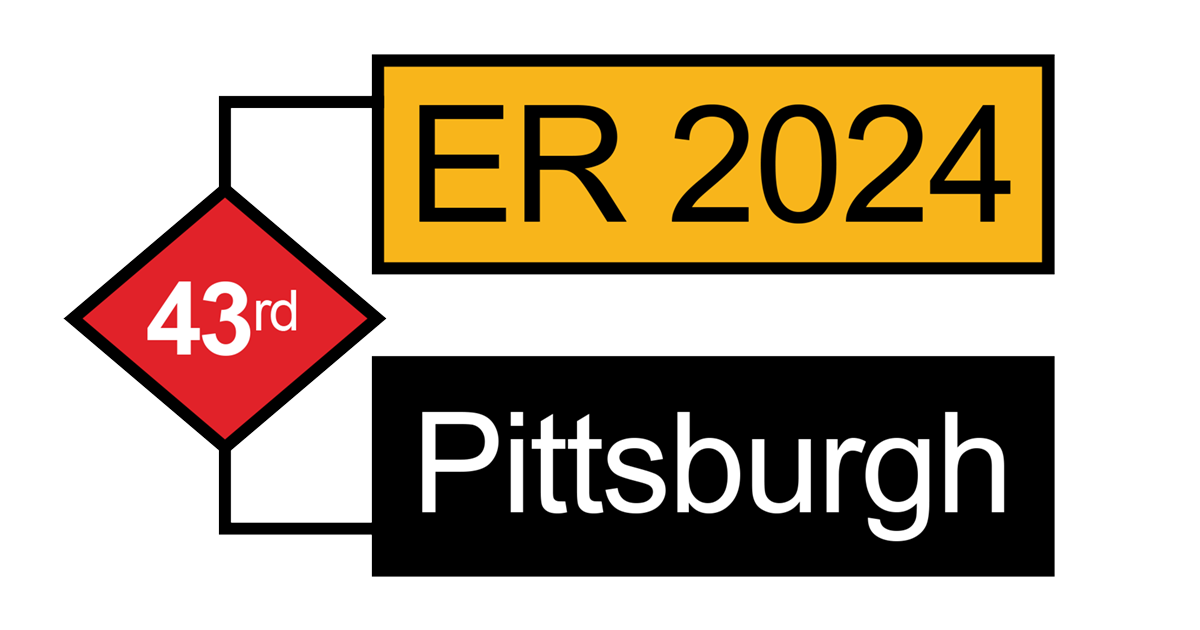Call for Tutorials (Closed)
ER 2024 tutorials introduce general or special topics in ER and relevant neighboring areas. A focus on specific tools and methodologies can still be useful to offer concrete examples and hands-on activities to participants.
This year, the main topic of the ER conference is Conceptual Modeling and AI, and we encourage the submission of tutorials showing new models, techniques, tools and so on for the conceptual modeling of Artificial Intelligence Applications, mainly those consisting of Machine or Deep Learning applications.
Important Dates
All deadlines are 23:59 AoE (Anywhere on Earth)
Proposal Submission
23 July 2024
The goal of a tutorial is to provide a road map – for beginners or advanced attendees – about a subject area related to conceptual modeling. Generally, tutorials emphasize breadth and cover material from a variety of different authors. The audience generally varies from novice students to practitioners and specialized researchers. Ideally, a tutorial covers a subject that has an adequately supporting corpus of past work and significant prospects of future expansion research-wise.
Topics of Interest
The topics of interest span the entire spectrum of conceptual modeling including research and practice in the areas defined in the Call for Papers. Some general topics include:
- Theories of concepts underlying conceptual modeling.
- General-purpose and domain-specific methods and tools for developing and communicating conceptual models.
- Techniques for the algorithmic processing of conceptual models.
- The impact of conceptual modeling and diagrams on databases, business strategies, and information systems engineering.
- Innovative applications of conceptual models in industry and practice.
Submission Instructions
Tutorials proposals must be submitted via the official ER submission page on Easychair to the track “ER 2024 Tutorials”.
Tutorial proposals must be no more than 5 pages LNCS style and must provide a sense of both the scope of the tutorial and depth within the scope (see style files and details). Tutorial proposals must identify the intended audience and its assumed background. Tutorials are typically 90 or 180 minutes long lectures given by an expert on a highly focused topic of interest to conceptual modelers. It should also be stated how a high-quality presentation will be delivered within the time frame specified. Tutorial proposals must include:
- Tutorial title
- The presenter(s) name, affiliation, contact information, and a short bio
- Five-line abstract
- Goals and objectives: The overall goal of the tutorial and the concrete objectives to be achieved
- Audience: Intended audience, level (basic or advanced), and prerequisites
- Topic relevance and novelty: Relevance to the scope of ER; the relevance to practice; the novel aspects that would make this tutorial appealing to ER participants
- Projected benefits: list of the targeted knowledge outcomes)
- Detailed outline and timetable
- Tutorial method, including teaching method(s) and technology requirements for presentation (beyond standard equipment, such as pc projector)
- References (optional): references to papers, books, etc. that your tutorial builds on. Please specify previous venues at which similar tutorials have been presented by you and indicate the difference between the proposed tutorial and previous ones.
- Sample Slides (optional): Include at least 5 sample slides of the presentation you plan to give if your tutorial is accepted. Select slides that are typical of your presentation style. These slides have to be submitted in a separate PDF file
- A 3-5 minute video “teaser” of the tutorial (optional), which provides a brief overview of the planned tutorial to attract the intended audience
Each proposal for a tutorial should be in English and must be submitted electronically via the official ER submission page.
Special Opportunity (Optional)
Accepted tutorials will have the opportunity to write a short 4-page paper that will be published within the Companion Proceedings of the 43rd International Conference on Conceptual Modeling together with papers from the ER Forum, Posters and Demos, and Special Topics tracks; all of them co-located with ER 2024. These proceedings will be published under CEUR-WS.org.

